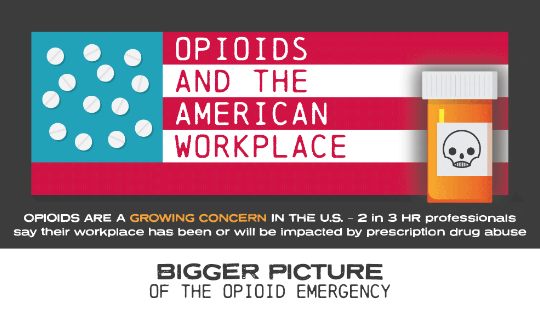Opioids in the American workplace are a growing concern in the U.S. – 2 out of every 3 human resource professionals say their workplace has been affected by prescription drug abuse or will be impacted by prescription drug abuse. But in order to fight against opioids we need to fully understand them first. To understand opioids we should go over exactly what classify as. There are 4 different main types of opioids: natural, semi-synthetic, fully-synthetic, and illegal. Euphoria-inducing properties can offer a respite from the physical and/or mental pain they are dealing with. In 2017, the CDC announced that opioid and prescription drug abuse has reached epidemic levels – when did this crisis begin?
In 2010, 1 out of every 5 patients with a pain diagnoses received an opioid prescription. But from 2012-2016, opioid prescription rates for 20%, but the damage was already done. From 2016-2017, about 12 million Americans misused prescription pain medicine; the largest risk factor for heroin and other illegal drug use. A gateway to addiction and illegal drugs has been opened recently. In the 1990’s opioids were increasingly prescribed for general or chronic pain treatment. Pharmaceutical companies assured doctors during this time that prescription opioids were safe. Direct-to-customers advertising of pharmaceutical drugs was widely deregulated. Consequently, the risk of addiction and misuse were not widely understood and many went untreated.
In the U.S., more than half of employees believe prescription abuse is a worse crisis than illegal drug use. Substance abusers also have more mishaps than the average worker. 86% of employers believe opioid abuse impairs workers’ performance, 39% think prescription drug abuse compromises safety in the workplace, and 31% of opioid or prescription drug abusers have experienced an overdose, arrest or injury relating to drug abuse.
Find out how employers and companies are helping those who are addicted here.


